by Jane Rosenstein
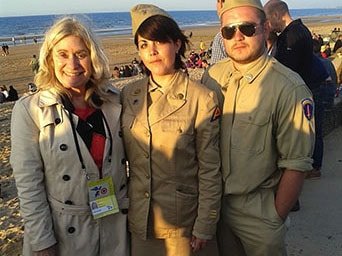
Saturday, June 7th was a beautiful sunny day on the beaches of Normandy. After my friend Ludovic who lives in Normandy and I had lunch in a small sidewalk restaurant overlooking the ocean, we decided to check the list of events planned for the day to celebrate D Day.
We noted that there was a picnic at Omaha Beach starting at 19.30. We wanted to attend the picnic but I suggested we go to the Canadian Museum first.
Riding through the area I noticed many houses had Canadian or American flags flying. The Normans are proud that they were rescued by the Allies.
We wanted to visit the Canadian Museum because it is the only one on the D Day Landing Beaches that deals with the Canadians in the Second World War. The museum opened on June 6, 2003 on the Juno Beach Center in the city of Courseuilles-sur- Mere where the Canadians landed on D Day- June 6, 1944.
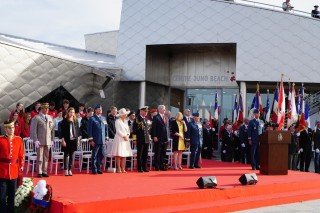
photo credit Juno Beach Center
On June 6, 2014 there was a special ceremony at the museum to commemorate the 70th anniversary of D Day and some very famous people attended such as Prince Charles and Camilla (to the left of Prince Charles).
The Second World War was a castastrope for Canada. Canadians had the largest number of troops after U.S.A. and Great Britain. On D Day there were 1,074 casualties of which 359 were killed. The 10-week campaign resulted in over 18,000 casualties of which approximately 5,500 were deaths. World War Two veterans, widows and children of the veterans wanted to create the Juno Beach Centre.
It cost about 10 million Canadian dollars to construct the Juno Beach Centre and finance the museum’s equipment and the opening ceremony. I found it interesting to learn that Canadians were resourceful by creating a fund raising program for the Juno Beach Association, the association that runs the Juno Beach Centre, called “bricks” where people buy “bricks” in honor or memory of a World War One and World War Two veteran as well as those who served in peace times and other conflicts. For 200 Euros the name is inscribed on a brick which is placed in a Juno Beach Memorial Kiosk. The bricks facing the English Chanel are resrved for those in the military while the others are for the donors. Other funds come from the 200 branches of the Canadian Legion, private and corporate donations, schools, museum tickets and gift shop sales.
When we arrived at the museum, we were impressed by seeing the standard field gun for the Second World War, the 25 ponder Mark II Quick Pdr Firing Field Gun (25) in front of the museum
Our visit to the museum was well organized. First we were told to see a 12 minute film called “They Walk with you- An Immersion into the Canadian Experience on D Day and during the Battle of Normandy.” A Canadian guide explained in both English and French that there would be projections on two walls – on one side and one above the exit door. It was fantastic to see the film because we felt like we were actually experiencing some of the emotions of the veterans.
Then we continued to the temporary exhibition which is entitle “Grandma, what was it like during the War?” Life for Normans and Canadians: from Occupation to Liberation.
It was designed for the 70th anniversary of D Day although it opened in February , 2014, to tell about the day to day experiences of life during the war and occupation; Children will learn what their grandparents would have experienced during these times. We visited 5 different stations containing : a classroom; a kitchen, staircase of a home and the ruins of a city. We learned about the day to day worries of both the Normans living with curfews, working in Germany, shortages of food, rationing and for Canadians rationing, worrying and most important for the two being separated from family and friends. The exhibit is very interesting because of the fine collections of objects from the times – diaries, cartoons, photos, proporganda posters, old books etc. Descriptions are in English and French. Adults accompaning children can explain the material to them. The exhibit will continue until February, 2015.
We saw the following exhibit spaces
Canada in the 1930s
. This area describes the life in Canada during the time with several interesting exhibits;
Canada Goes to War Abroad, War at Home
This exhibit presents the declaration of war, battles on land, air and sea and also
gives information about how Indians who are called the First Nations participated in The Second World War.
Roads to Victory
This section tells about the Canadian campaigns up to the liberation of Europe.
Some Came Back Others Did Not
This section tells about some who survived and some who didn’t.
There is a scroll of 45,000 Canadians killed. If one watched the whole scroll it would take 15 hours. I found this very touching and sad.
“They Walk With You” a 12 min film about the Canadians on D Day and the Battle of Normandy. We were just in time to view the last showing of the day.
The Juno Beach Center has an interesting gift shop with many unique items. We bought some picture postcards showing the locations of the Normandy Beaches with their code names.
We enjoyed a wonderful visit to a unique museum but were saddened by all the casualties.
Following the visit to the Canadian Museum we drove to the 10th annual Giant Picnic at Omaha Beach which has been attracting about 1500 people each year. I couldn’t believe that we found a parking space right near the entrance to the beach where the picnic was. I expected to see people dancing to the band which played music in Glen Miller style but almost all were just eating. The combo was very good and the crowd enjoyed the music.
It appeared people who came were there to enjoy a picnic brought from their homes with their friends and were using the celebration of D Day as a reason to enjoy good comaraderie. There was food for sale- barbecued sausages and of course French fries but the line was too long for us. We enjoyed meeting the people particularly the lady with her father and brother both dressed in World War II uniforms. I asked them what was the reason and the lady told me that her father is a collector of World War II automobiles. He has exhibitions which my friend Ludovic might want to attend as he lives in Normandy.
To commemorate the 60th anniversary of D Day in 2004, Antilore Banon designed a sculpture 9 meters high called “Les Braves” in memory of the American soldiers who fought and died on Omaha Beach . An American company, Acelor Mittal, the largest steel company in the world, based in Coatesville, PA buildt the sculpture. It was intended to be displayed on Omaha Beach for only a few years but due to a public petition in 2010it has been allowed to stay until at least 2019 when the permission could be renewed The sculpture consists of three parts: The Wings of Hope, Rise of Freedom and Wings of Fraternity.
Many people bought lanterns which they lit and launched into the sky. This was very interesting and supported the D Day picnic. Children also enjoyed seeing this. The idea was to light the metal and place the lantern on the ground. When it was hot enough it launched into the sky.
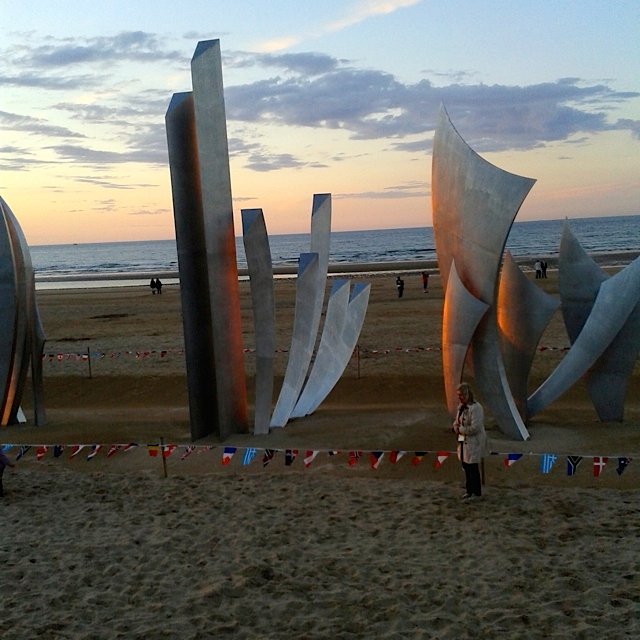
I met only one American man. He lives in a French speaking part of Belgium and teaches English. He told Ludovic and I that he avoids Americans and prefers to be immersed in the Belgium culture. He criticized Americans for not adapting to foreign cultures especially not speaking French. I agreed with him. Then he told me the story of a man whom he met who was a colleague teaching English. He asked the teacher if he spoke French and when he said he didn’t then he asked how long he had been living in Belgium. The teacher had been living in Belgium for 12 years! The man said that people who come for short stays to work do not have to learn French but those who live in Francophone countries or areas of countries where French is spoken should. I think that this is very important. Many times I wonder how people living in Paris who do not speak French can communicate with the locals.They miss out on many cultural opportunities like such as going to the theatre and French movies. While I do not think that people living in foreign countries should speak the native language fluently, I think they should speak some basic phrases and know the language enough to get by. Ludovic agrees and told me that he speaks English well because he lived in London.
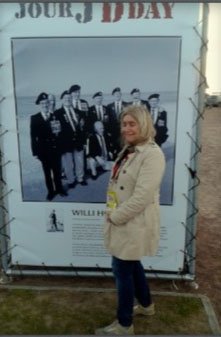
It was most interesting to see a kiosk with photos of the veterans and their stories in both English and French.
We were a bit disappointed not to have met any veterans or to have seen any heads of state at the picnic but suppose that they had other plans.
Ludovic and I left at 11.00 p.m. being hungry after there was not much barbecue left. We looked in local towns around midnight but not even Mc Donald’s was open so we drove on. About 1 a.m. we stopped at a 24 hour convenience center and ate a salad which costs 9 Euros! A young couple stopped me and asked me if I was at Juno Beach earlier that evening! I asked them if they were Canadian. They told me that they are French and live in Paris but studied in Montreal. Then we drove another hour and a half to get to Ludovic’s city.
It was a great experience to visit the Canadian Museum and to go to the Giant Picnic.
Canada in the 1930s
This area describes the life in Canada during the time with several interesting exhibits;
Canada Goes to War Abroad, War at Home
Some Came Back Others Did Not
This section tells about some who survived and some who didn’t.
There is a scroll of 45,000 Canadians killed. If one watched the whole scroll it would take 15 hours. I found this very touching and upsetting.
“They Walk With You3 a 12 min film about the Canadians on D Day and the Battle of Normandy. We were just in time to view the last showing of the day.
The Juno Beach Center has an interesting gift shop with many unique items. We bought some picture postcards showing the locations of the Normandy Beaches with their code names.
We enjoyed a wonderful visit to a unique museum but were saddened by all the casualties.
Following the visit to the Canadian Museum we drove to the 10th annual Giant Picnic at Omaha Beach which has been attracting about 1500 people each year. I couldn’t believe that we found a parking space right near the entrance to the beach where the picnic was. I expected to see people dancing to the band which played music in Glen Miller style but almost all were just eating. The combo was very good and the crowd enjoyed the music.
It appeared people who came were there to enjoy a picnic brought from their homes with their friends and were using the celebration of D Day as a reason to enjoy good comaraderie. There was food for sale- barbecued sausages and of course French fries but the line was too long for us. We enjoyed meeting the people particularly the lady with her father and brother both dressed in World War II uniforms. I asked them what was the reason and the lady told me that her father is a collector of World War II automobiles. He has exhibitions which my friend Ludovic might want to attend as he lives in Normandy.
To commemorate the 60th anniversary of D Day in 2004, Antilore Banon designed and built a sculpture 9 meters high called Les Braves in memoryof the American soldiers who fought and died on Omaha Beach and It was intended to be displayed on Omaha Beach for only a few years but due to a public petition in 2010it has been allowed to stay until at least 2019 when the permission could be renewed The sculpture consists of three parts: The Wings of Hope, Rise of Freedom and Wings of Fraternity.
Many people bought lanterns which they lit and launched into the sky. This was very interesting and supported the D Day picnic. Children also enjoyed seeing this. The idea was to light the metal and place the lantern on the ground. When it became hot enough, it launched into the sky.
I met only one American man. He lives in a French speaking part of Belgium and teaches English. He told Ludovic and I that he avoids Americans and prefers to be immersed in the Belgium culture. He criticized Americans for not adapting to foreign cultures especially not speaking French. I agreed with him. Then he told me the story of a was man who was a colleague teaching English. He asked the teacher if he spoke French and when he said he didn’t, he asked how long he had been living in Belgium. The teacher had been living in Belgium for 12 years! The man said that people who come for short stays to work do not have to learn French but those who live in Francophone countries or areas of countries where French is spoken should. I think that this is very important. Many times I wonder how people living in Paris who do not speak French can communicate with the locals.They miss out on many cultural opportunities like such as going to the theatre and French movies. While I do not think that people living in foreign countries have to speak the native language fluently, I think they should speak some basic phrases and know the language enough to get by. Ludovic agrees and told me that he speaks English well because he lived in London.
It was most interesting to see a kiosk with photos of the veterans and their stories in both English and French.
We were a bit disappointed not to have met any veterans or to have seen any heads of state at the picnic but suppose that they had other plans.
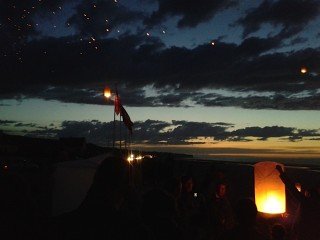
Ludovic and I left at 11.00 p.m. being hungry after there was not much barbecue left. We looked in local towns around midnight but not even Mc Donald’s was open so we drove on. About 1 a.m. we stopped at a 24 hour convenience center and ate a salad which costs 9 Euros! A young couple stopped me and asked me if I was at Juno Beach earlier that evening! I asked them if they were Canadian. They told me that they are French and live in Paris but studied in Montreal. Then we drove another hour and a half to get to Ludovic’s city.
It was a great experience to visit The Canadian Museum and to go to the Giant Picnic.
For events and dates of events planned this summer please go to www.the70thnormandy.com.
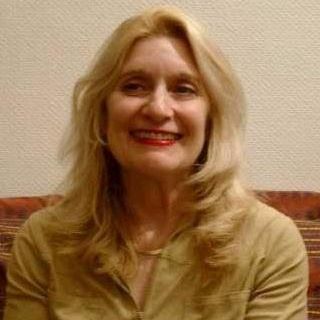
Jane Rosenstein is a U.S. citizen living in Paris, France. She is a professional translator/interpreter. She is the owner of The International Connection which does international marketing consultation including sales of wine, interpretation, and translation.
She enjoys the cultural life that living in Paris offers and has talents in organizing events. She speaks English, French, and Spanish. She has a B.S. degree in mathematics from the University of Pittsburgh and an M.B.A. degree from Georgia State University in Atlanta, GA.
ATTENTION READERS
We See The World From All Sides and Want YOU To Be Fully InformedIn fact, intentional disinformation is a disgraceful scourge in media today. So to assuage any possible errant incorrect information posted herein, we strongly encourage you to seek corroboration from other non-VT sources before forming an educated opinion.
About VT - Policies & Disclosures - Comment Policy



